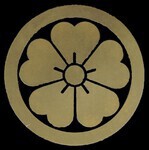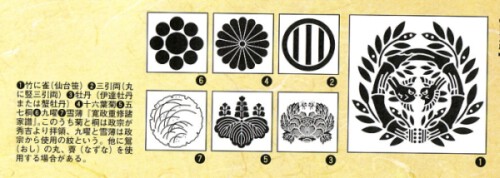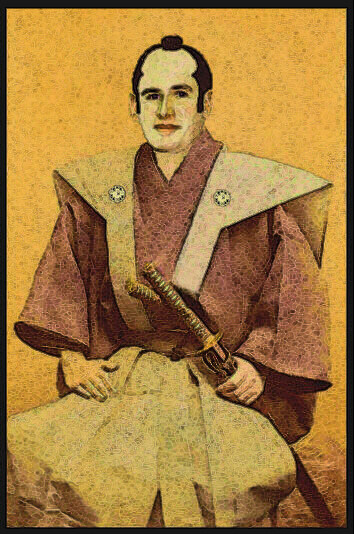-
Posts
3,242 -
Joined
-
Days Won
99
Everything posted by Guido
-
You got some replies with Oshigata for comparison, but people were probably put off by your holding back info, and only giving it out piece by piece. Plus, Susishinshi Masahide is very easy to reasearch, being the famous smith that he is; Google alone gives you more than 450 hits. And on a final note: forget about the signature, and look at the workmanship - would you have kantei'd the sword as Masahide if the Nakago was covered?
-
This sword was already posted on SFI. Since it's obviously Gimei, there's no point in discussing the details of the inscription.
-
Of those re-tested, there was only one upgrade: Izumi no Kami Kanesada from Ô-Wazamono to Saijô-Ô-Wazamono and four downgrades: Nidai Kanemoto from Saijô-Ô-Wazamono to Ô-Wazamono Fujishima Tomoshige from Ô-Wazamono to Yoki-Wazamono Shodai Tsushima no Kami Sadashige from Ô-Wazamono to Yoki-Wazamono Echizen no Kami Nobuyoshi from Ô-Wazamono to Wazamono Also, some of the former Wazamono smiths are omitted from the Kokon Kaji Bikô.
-
The information given in that article isn't entirely correct. 1. The "Kaihô Kenjaku 懐宝剣尺" was originally published in 1797 (寛政九年), and reprinted in 1805 (文化二年). 2. Even though many (most?) Japanese read "Ryô-Wazamono", the correct pronounciation is "Yoki-Wazamono". 3. In 1830 (天保元年) the "Kokon Kaji Bikô 古今鍛冶備考" was published; all swords in the Kaihô Kenjaku were re-tested, as well as quite a few more swords by other smiths. This brought the number of tested smiths from 170 up to 1.111 in total, including many of the "old masters". The Wazamono ranking in the Fujishiro books, the Tôkô Taikan etc. is based on the Kokon Kaji Bikô.
-
Try "pillow" instead of "cushion" - yup, you guessed it already, it's called "Katana-Makura"!
-

An off the wall question.....
Guido replied to Henry Wilson's topic in General Nihonto Related Discussion
Mr. Wikipedia says -
*DELETED* Sorry for the confusion - I shouldn't post before getting my spelling straight, or without elaborating on controversial historical "data".
-
Not trying to put words into Andreas' mouth, but I think he was joking about this Tanto looking somehow like a hocho ("kitchen knife") Masamune Utsushimono - at least that was my ininitial impression.
-
Barry, the tester is supposed to be Matsumoto Chôdayû Masatomo 松本長大夫雅友. However, I have my doubts about the entire inscription of this sword, including the Tameshi-mei.
-
There seem to be a few mixups and double entries, maybe this happened when the list was converted from MS Word into HTML. I'll send Brian the original list, so he can fix this.
-

The way of warrior-samuraie on youtube
Guido replied to Bushido01's topic in General Nihonto Related Discussion
The Wikipedia link says he was born in March 1926, I met him in August 2003, so you do the math . -

The way of warrior-samuraie on youtube
Guido replied to Bushido01's topic in General Nihonto Related Discussion
I was very surprised when I saw him in the video. I imported a sword into Japan via unaccompanied air luggage in 2003 (never again, what a hassle!), and therefore had to attend a pre-Shinsa at Narita airport. Through this video I now learn that it was no other than Ôtake-sensei who met me in a stuffy room at one of the cargo offices at the airport. It was a sweltereing day in August, no a/c, and we were sweating like pigs, but he was very kind, and an extremely pleasant person to talk to, and obviously knew a lot about Nihontô. I had no idea he's such a famous person! -
For the NMB members living in Japan: I do a lot of business with A-Cross, a moving company (among their other activities). They also sell screens and stone lanterns at very reasonable prices. Once a year they have a charity sale at the Franciscan Chapel Center in Tôkyô, with some great bargains. Their screens are of very high quality, and can't be compared to stuff like they sell at the Oriental Bazar on Omotesandô. Here's the link: http://www.japanesescreens.net/
-
I can't find any exact dates, but all books say that 斬り捨て御免 became legal in the early Edo Jidai, and was abandoned in 1871. I still practice it, but that's just me ...
-
Since when is he allowed to make decisions for me? Kubi da! That's entirely possible, but I think it's the other way around: the *customer* had / chose a Mon, and the artist put it on the Tsuba without asking too many questions (not healthy to mess with the Buke, although Kirisute Gomen wasn't in effect yet in the Muromachi Jidai). However, what sometimes looks like a Mon just might be a decorative pattern - think Kiri: you see it on a lot of Tsuba, without it being meant as a Kamon. Maybe, but you have an excuse: you're married, and that means you can't afford to put your brain in idle even for a split second. (Remember, that's how you *got* married in the first place!)
-
BTW, my firewall found a virus when accessing the Kazenaga homepage, so please be careful with this website!!!
-
Henry, I still haven't received the Tsuba, could you please give me the tracking number? But seriously, it's extremely difficult to trace a Kamon back to a certain family, or even individual, without supporting evidence. For instance, the Kuyô-Mon on a Tsuba by Hirata Hikozo leaves little doubt that it was made for the Hosokawa family. But Kamon were not copyrighted, and basically could be chosen and changed freely - just look at the attachement, those are the Kamon that Date Masamune used.
-
The attached picture shows the last head of the Moniwa family. The resemblence with me is pretty obvious, so it should be clear that the Tsuba rightfully belongs to me. Henry, please mail it to my office address; thank you!
-

you should see this - (fraudulent auctions)
Guido replied to eugene walton's topic in Auctions and Online Sales or Sellers
If we tell eBay that it says "Sanmei Trading Co., Ltd. all rights reserved" on the pic of the Daishô, they would reply that Tokugawa Art in Nagoya may have given the "seller" permission to use the photo? I'm getting dizzy from all this legal nonsense ... -
I agree with Ford 100%, the entire inscription looks fishy to me. There are a couple of points in how it was done (very crudely, btw), and *what* is written, that makes it very unlikely this Mei is genuine. I even have doubts that it was done by someone adept at Japanese. Not that it really matters anymore at this point, but the name is given as Nobuhide, so that's what the Kao should stand for.
-

you should see this - (fraudulent auctions)
Guido replied to eugene walton's topic in Auctions and Online Sales or Sellers
Aaahhhh [slapping my forehead], *that* explains everything .. I'm sometimes painfully aware of not being a native English speaker. Or maybe it has nothing to do with language, and I just entered the Twilight Zone! -
Forget the insurance, get a car with a navigation system! I got lost more often than I care to remember because of road signs that lead you straight down a rabbit hole. Leaving Kyôto for Uji is my all time favorite: if you follow the signs, you end up cruising in circles forever ...
-

3 minutes at the Dai Token Ichi
Guido replied to Rich T's topic in General Nihonto Related Discussion
Erol, are you sure it's Sat/Sun/Mon? It always used to be Fri/Sat/Sun ...



